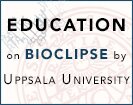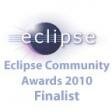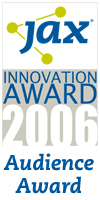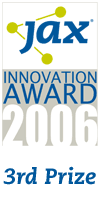Bioclipse is a rich client, which means it is a downloadable application that run on your local computer but also gives the possibility to communicate with servers for data retrieval and computational services. The powerful plugin architecture is based on Eclipse, and results in a responsive, integrated user interface designed for simple and intuitive operations that at the same time is easy to extend with custom functionality. Some examples of functionality is listed below.
Cheminformatics
Cheminformatics in Bioclipse is mainly based on the Chemistry Development Kit (CDK), and contains a framework for managing and analyzing chemical compounds. Bioclipse supports editing in 2D, processing large collections of molecules in tables, calculation of various types of properties, and much more cheminformatics functionality. The Jmol application is integrated in Bioclipse as an editor, and provides advanced interactive 3D visualizations.
Bioinformatics
Bioinformatics in Bioclipse concerns primarily the management and analysis of biological sequences (DNA, RNA, and protein). Bioinformatics in Bioclipse relies heavily on BioJava, which provides core bioinformatics functionality, and a graphical editor for sequence alignments. Various clients for Web services are also available to facilitate downloading of e.g. biological sequences and annotations, as well as for bioinformatcs analysis.
Pharmacology and Drug Discovery
Bioclipse is equipped with many features that simplify pharmacological research and drug discovery. Quantitative Structure-Activity Relationships (QSAR) is a methodology to relates the responses between several chemical structures and a target, for example to measure the toxicity of drugs in the human body, described by mathematical descriptors and modelled using statistical methods. QSAR models can for example predict if a compound is toxic, and scientists can get decision support for changing the chemical structure before even testing it in the wet lab. Bioclipse has many features to work with QSAR and similar fields. A QSAR Project is available with a Builder that operates on a QSAR project file, completely describing the project model. A multi page editor is available, with tabs to select chemical structures, choose mathematical descriptions (descriptors), and all other metadata for performing the analysis.
Semantic Web for the Life Sciences
Bioclipse has advanced tools for interacting with semantic web resources. It allows for data integration and retrieval in RDF, OWL, and similar formats, with graphical visualizations.
Bioclipse-R Itegration
The statistical computing language R is now integrated in Bioclipse. R is a free and open source software that runs on Windows, Mac OS, and a wide variety of UNIX platforms and similar systems (including FreeBSD and GNU/Linux). The Bioclipse-R feature provides a graphical R editor and a interactive R console for easy running of R scripts, snippets and commands, and the plotting capabilities of R. Take a look at the Bioclipse-R page for more information.
Decision support
Bioclipse facilitates working with decision support systems, for example when predicting the susceptibility of a drug for certain patients. By sequencing the DNA of the patient (or e.g. a virus in the patient), it is possible to predict what drugs that would best attack the disease. An example of this is HIVPred, which is implemented as an XMPP cloud service and a plugin in Bioclipse to facilitate invocation.
Bioclipse also has a feature for decision support in safety assessment with graphical views and editors for executing and integrating various computational models to predict the safety of chemical compounds.
eScience
Bioclipse is a rich client and takes full advantage of networked resources, such as databases and interoperable Web services, XMPP services. There is ongoing work to integrate Workflow engines, such as Taverna.
Databases in the life sciences
Bioclipse has projects aimed at delivering chemical and biological databases to end users. One example is StructureDB.
Scripting
Bioclipse is equipped with a scripting language (Bioclipse Scripting Language, or BSL) which can be used to automate tasks or create reusable snippets that can be shared with others. BSL is based on JavaScript, and is very powerful in chemical and biological analyses. Bioclipse makes use of Gist and MyExperiment for sharing of scripts.




